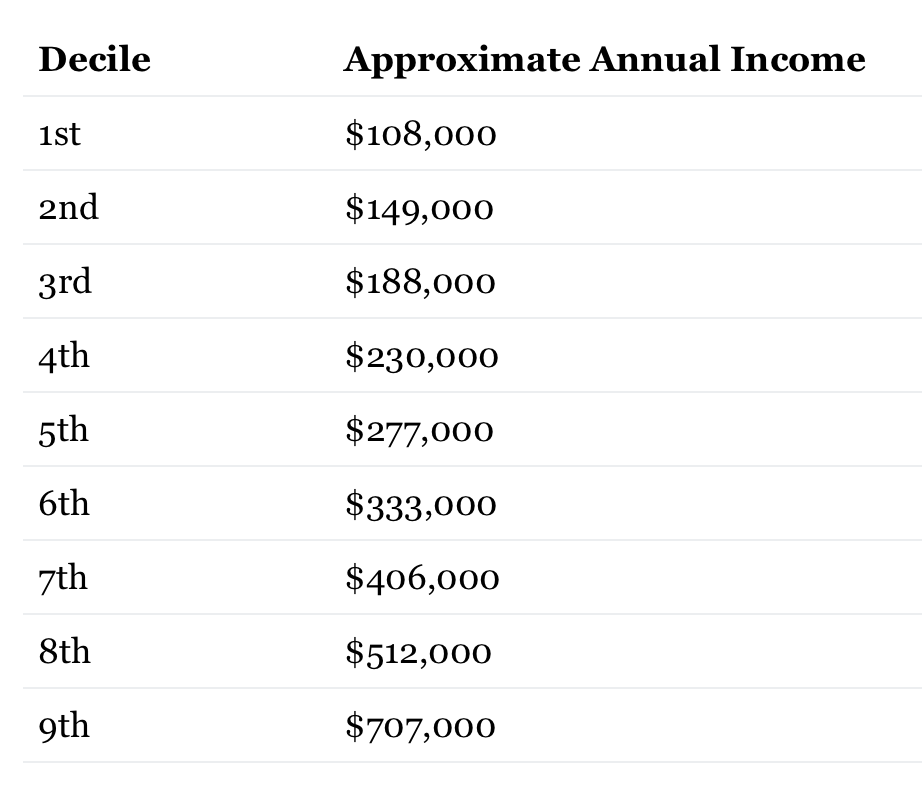Averages & medians don't really tell you what you need to know
Perhaps you’ve seen the statistic: 50% of marriages end in divorce.
That’s a sobering stat. Makes you think twice about getting married, right?
But it’s also misleading. It does not mean your marriage has a 50% chance of ending in divorce. It means that half of marriages have a 0% chance of success, and half of marriages have a 100% chance of success. It really just means that 50% of people were bad at picking a spouse.
You have to be careful when you’re looking at averages. You have to look at context. You have to be brutally honest.
According to data from the Bureau of Labor & Statistics, a new business has an 80% chance of lasting for a year, and a 50% chance of lasting five years.
This is an interesting statistic, but not in terms of what you consider...the "likelihood for success” when you're starting a new business. All this tells you is that 50% of people have no business starting a new business. Generalized averages like these are not a metric you can use when deploying capital. There is no such thing as a “half alive” company: you’re either not doing anything, or you’re doing everything. You’re either running a vanity business, or you’re running a profitable business. There really isn’t an in-between.
Nobody starts a business in 2025 expecting a coin flip on whether they’ll be in business in 2030.
I know two guys in my town. They both started the exact same business (a coffeeshop). Let’s call them Thomas and Roberto. These guys started from the exact same position: neither had significant riches or resources, both moved from out of town, both had previous managerial experience in the coffee industry, and both started from absolute scratch.
Thomas’s business is thriving. Roberto’s business just closed down at a massive loss and significant personal non-dischargeable debt (thanks to a particularly ill-advised SBA loan).
If you were to ask me the chances of success, if each of these guys started up another location? If I were to average the two, there would be a 50% chance of success. But that’s misleading.
Thomas would have a 100% chance of a second successful location, and Roberto would have a 0% chance. The specific reasons aren’t really relevant, but suffice it to say if we were in Vegas, I would put my entire bet on Thomas. He would succeed. Roberto would fail.
Let’s look at physician income.
If you were to Google “what is the average income for a physician in America” then you’d come up with the amount of $239,200. Even though this is technically true, it is practically misleading.
Here’s the actual breakdown of physician income by deciles:
You can break this up many ways. Only 10-20% of physicians actually make an income in the $239k range. Around a third of physicians make far less, around $150k (likely residents, telehealth doctors, med clinic staff) but there is a significant portion (another third) of physicians making $500k-$1m.
I’m not sure that many doctors go into medicine with the goal of making $239k. It’s honestly not that great of a return (considering 8 years of higher education and the median cost of $442,384 to get a medical degree). Like most humans, they probably want to make somewhere in the top 50%, or even the top 5% of their field, which is $960,000-$1,900,000.
Doctors aren’t choosing their career path because of the median. They’re choosing their career path based on what they’ll be making after a few decades of experience, and perhaps going into a specialty. A highly paid garbageman makes more than the lowest paid doctor.
Shooting for averages gives you an average result, with average problems.



